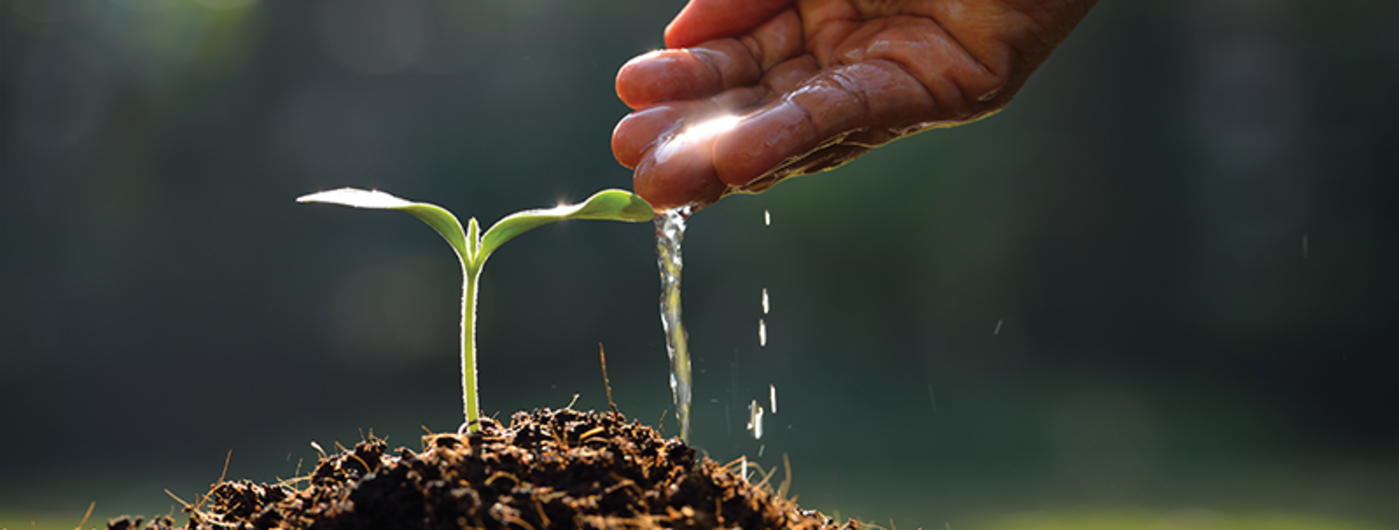Water Wisely: Start in your own backyard
Quick tips
- Select plants that will thrive in existing soil type, light, and space.
- Collect and use rainwater to water plants.
- Water evergreens until the ground freezes.
- Water in early morning to allow leaves to dry and reduce diseases.
- Mulch plants to conserve moisture.
- Use sensors and smart controllers on automated irrigation systems.
- Water deeply, but less often, to encourage root growth and drought tolerance.
Water is a precious resource needed by all living things. If you care for a yard or garden, you can help protect water resources by being wise about watering practices, starting in your own backyard.
Much of our treated drinking water is also used for landscape irrigation, so it pays to reduce water use and protect our supply by being wise about landscape watering practices at home.
Although all plants need water to be healthy and grow, some—like lawns—actually need less water than we think. While others—like trees—need more.
Knowing the what, when, where and how of watering in your garden or landscape is key to growing healthy plants and conserving our precious water supply.
Tips for maintaining healthy garden beds
What to water:
- Choose plants that will thrive in your existing soil type, light, space.
- Know which plants require consistently moist soil and those that prefer drier conditions.
- Note microclimates: dry shade, windy areas, poor drainage.
When to water:
- Early morning to allow leaves to dry and reduce foliar diseases.
- Feel the top 6 inches of soil. Dry? Time to water.
How and where to water:
- Water the base of plants to avoid getting leaves wet and reduce foliar diseases.
- Lay out soaker hoses or drip irrigation in early spring as plants emerge.
- Water deeply and less often to promote deeper, healthy roots.
Conserve water:
- Collect and use rainwater.
- Choose drought-tolerant plants that require less water.
- Add 2 to 3 inches of organic mulch to conserve moisture in soil and protect roots.
- Amend soil with compost to increase soil’s water-holding capacity.
Tips for maintaining healthy shrubs and trees
- Select drought-tolerant shrubs:
- sumac, alpine currant, buffaloberry, spirea, ninebark, potentilla, smoke bush, gray dogwood, common bearberry, black chokeberry, forsythia, junipers
- Select drought-tolerant trees:
- amur corktree, ginkgo, hackberry, Kentucky coffeetree, honeylocust, tree lilac, bur oak, American bayberry
- Newly planted shrubs and trees require regular watering until they are established.
- Apply water to the root ball once a week.
- Water established shrubs and trees when the top 6 to 9 inches of soil dry out.
Watering established trees and shrubs
Watering newly planted trees and shrubs
Tips for maintaining a healthy lawn
- Set your mower at 2.5 inches or higher to promote deeper roots.
- Water between 4 and 8 a.m. to reduce water loss due to evaporation or wind.
- A quarter-inch of water per week (minus any rainfall) is all that is needed to keep lawns alive during the summer.
- Keep intervals between watering as long as possible.
- Install a rain sensor, a soil moisture sensor, or a smart irrigation controller as part of your automated sprinkling system to reduce over-watering.
- Utilize drought tolerant turfgrasses to conserve water.
Water-saving strategies for home lawns
Is your home lawn irrigation system working properly?
Provided by the U of M Extention
